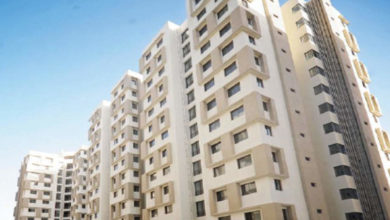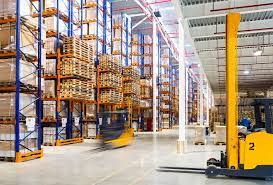Infrastructure Sector in India
Introduction
A well-developed infrastructure is a foundation for growth in any country, paving the way for a better quality oflife and a rapid rise in gross domestic product (GDP), especially for developing countries such as India.
Construction sector in India is considered to be the second largest employer and contributor to economic activity, after agriculture sector. Construction sector also accounts for most inflow of Foreign Direct Investment (FDI) after the services sector and employs more than 35 million people in the country.50% of the demand for construction activities in India comes from the Infrastructure sector, while the rest comes from Industrial activities, residential and commercial development etc. The FDI inflows in construction (infrastructure) activities during the period April 2000 – July 2014 touched Rs 12,953.51 crore (US$ 2.11 billion). Indian Construction Industry value is estimated to be more than US$ 126 billion.
Infrastructure growth holds the key to the industry realizing its potential in India. In the 12th Five Year Plan, the government has earmarked approximately $1 trillion for infrastructure investment, with 40 % of the funds to come from the private sector. At the minimum, 45% investment in infrastructure is towards construction & 20% of the infrastructure spend will be for modernization of the construction industry. In order to attract such investment, the Indian government has eased FDI norms for quite a few sectors of infrastructure development. Consequently, infrastructure spending is expected to grow from 7.2 % of GDP in 2012 to 9 % by 2017. This is likely to spur the demand for the earthmoving and construction equipment’s, and if the industry’s full potential is realized, the result could be a $16 billion to $21 billion industry by 2020.

USD 1 trillion earmarked for investment in the 12th Five Year Plan
The 12th Five Year Plan
India’s need for infrastructure development is also well supported by the government’s intentions as outlined inthe 12 Five Year Plan (FYP). Infrastructure is one of the plan’s primary areas for spending, with about $1trillion (Rs. 55 lakh crores) earmarked for investment. Five sectors account for more than 80% of total planned spending: electricity, telecom, roads and bridges, irrigation, and railways, includingmass rapid transit systems.
Overall, the 11th FYP saw a significant rise in infrastructure investment, with $ 436 billion (Rs. 24 lakh crores) invested. This represents an overall increase of 70 % compared to the 10th FYP. Although the infrastructure investment fell short of target during the 11th FYP by about 10 %, the planned investment is now more than double the levels achieved in the 11th FYP. Private investment was higher than projected during the 11th FYP. The shortfall was the result of lower-than-planned investment by central and state governments, primarily in railways, irrigation, water supply and sanitation and ports.
Overall, infrastructure spending is expected to grow from 7.2 % of GDP in the 11th FYP to 9 % by fiscal year 2017. Private investment in infrastructure is expected to increase from Rs. 8.8 lakh crores in the 11th FYP to Rs. 26.8 lakh crores in the 12th FYP, with the last year alone of the 12th FYP period (fiscal year 2017) targeting private investment of Rs 8.7 lakh crores. More than 80 % of private-sector spending will continue to focus on four sectors: telecom, electricity, roads and bridges and renewable energy. Private investment in infrastructure is expected to increase from 37 % in the 11th FYP to 48 % in the 12th FYP. This growth is expected to be spurred by private players’ expected capacity expansion and their ability to provide good quality, timely service while keeping costs low.

Infrastructure spending is expected to grow
Indian Urban Infrastructure
Only 30% of Indian population lives in urban areas. As per government of India estimates, urbanization in India is expected to grow at an astonishing rate of 38%. Indian Urban Infrastructure and Services, parts of which still bear markings of its British heritage, clearly isn’t adequate to deal with such pressure. Over the next 20 years, it is estimated that US$ 650 billion investment is required in urban infrastructure. Of this, almost 45% is required for development of urban roads.
The Twelfth Five Year Plan document expects 48% of the Plan investment to come from private sources, conditional on several national policy initiatives to restore investor confidence. To boost urban infrastructure across the country, the government has initiated numerous measures and has allocated almost US$ 2 billion under Jawaharlal Nehru National Urban Renewal Mission (JNNURM). The government has also launched the Urban Infrastructure Development Scheme for Small and Medium Towns with an outlay of US$ 1 billion to address infrastructure needs of small towns and cities.
Additionally, there is a renewed push towards Public Private Partnerships (PPP) in the sector. Delhi – Mumbai Industrial Corridor (DMIC) is an ambitious Infrastructure programme conceptualized with Japanese government and aiming at developing new industrial cities as “Smart Cities” and converging next generation technologies across infrastructure sectors. Projects worth investment of US$ 200 Billion have already been approved under DMIC. Success of DMIC has prompted many similar corridors including Bangalore Chennai corridor etc.
Roads
India has one of the largest road networks in the world, behind only the United States and China. Roads account for 80 % of passenger traffic and 65 % of freight traffic in India. The annual growth of road network in India is projected at over 12% for passenger traffic and over 15% for cargo traffic.Indian Road Network is divided into National Highways, State Highways/PWD roads and rural roads. The Indian Government estimates around US$ 27 billion plus private investment is required over FY12-FY17 to improve the country’s road infrastructure.
The National Highways Development Project (NHDP) is a project to upgrade, rehabilitate and widen major highways started in early 2000s. NHDP is planned to be implemented over seven phases. The program envisages an investment outlay of over US$ 40 billion. Currently 33,500 kms are already developed or are under implementation with balance 21,000 kms are yet to be awarded. Extensive contribution of the private sector is being utilized for implementation of NHDP through contracting and Public Private Partnership (PPP).
The 12th FYP outlays an increase in planned investments by more than 100 % from the 11th FYP achievements, driven by higher targets across national highways, state highways and rural roads. The FYP has plans for about 13,000 kilometers of new national highways and 158,000 kilometers of new roads in rural areas. Apart from government spending, private funding has increased from 5 % in the 10th FYP to 20 % in the 11th FYP, primarily driven by factors such as 100 % foreign direct investment in road infrastructure, 10- to 20-year tax breaks during concession periods and duty exemptions for importing road equipment. The 12th FYP targets about 33 % of the investment to be fulfilled by the private sector. In the current five year plan, 3928 Kms of National Highways and 39,144 Kms of Rural Roads, have been createdtill December 2013 to give a big boost to infrastructure industries.
The value of total roads and bridges infrastructure in India is anticipated to grow at a CAGR of 17.4 % over FY12-17. The country’s roads and bridges infrastructure, which was valued at US$ 6.9 billion in 2009, is projected to touch US$ 19.2 billion by 2017.

Investments in Indian roads are expected to jump
Airports
There are a total of 454 airports in India, out of which around 90 are open for commercial services and 16 are designated as international airports. Delhi and Mumbai are by far the busiest airports in India, carrying almost 2.5 times traffic as the next busiest airport.
Air traffic has increased rapidly in the last decade. During the period 2007-08 to 2012-13, Passenger traffic and Freight traffic grew at a cumulative annual growth rate of 6.4% and 5.0% respectively. Indians are still flying in much greater numbers. However, a number of Indian airlines have faced challenging market conditions in the recent years, and the rate of growth is likely to be significantly less than initially projected, estimates suggest that passenger traffic is expected to grow to 320 million by 2022-23 (an annual cumulative growth rate of 8.44%). It is anticipated by the civil aviation ministry that domestic cargo will grow by 8 times the period 2009-10 to 2031-32 from its level of 2009-10 whereas international cargo will grow by 7.6 times.
The growth so achieved has put tremendous pressure on current airport infrastructure in the country. The Indian Government has projected that an investment of around US$ 12 billion in the next five year plan will be needed to help cope with additional demand, and private sector participation is expected to play a key role. 75% of the investment envisaged in the next five year plan is expected to be contributed by private sector.
Railways
Indian Railways has the world’s fourth largest rail network comprising 115,000 km (71,000 mi) of track over a route of 65,000 km (40,000 mi) and 7,500 stations. Indian Railways carried 1,009 million tonnes of Freight Traffic and 8,501 million passengers (more than 23 million daily) in the FY 2012-13. There is an estimated annual traffic growth of 4% to 5%. Indian Railways is also the world’s second largest employer with a workforce of 1.5 million.
One major programme intended to attract private investment is the Dedicated Freight Corridor project. The project is intended to decongest the routes between Delhi & Mumbai and Delhi &Kolkata by building dedicated cargo lines at an estimated cost of US$6 billion-7 billion.
Railways have continued to be another large focus area for developing transportation infrastructure, with the government investing about Rs 201,000 crores in rail projects during the 11th FYP. However, this was 24 % lower than planned investments, mainly the result of lower freight traffic growth and revenue losses of Rs 81,000 crores in passenger traffic because of several years of unrevised tariffs. The investment shortfall was further driven by negligible private participation (Rs 9,000 crores against a target of Rs 65,000 crores). Going forward, about Rs 519,000 crores have been earmarked for railways during the 12th FYP, out of which about Rs 95,000 crores are targeted for investment in dedicated freight corridors on eastern and western routes. In the current five year plan, 3,343Kms of New Railway track have been createdtill December 2013 to give a big boost to infrastructure industries.
Ports
India is blessed with a coastline of more than 7500 kms and countess opportunities for natural ports. Ports in India are classified as Major and Non-Major Ports. There are currently 13 Major ports in India. Additionally, there are more than 180 non-major ports governed by the state governments. However, only about 60 of these non-major ports are currently operational.
Current capacity of major ports in India is 745 MMT against the traffic of 545.79 MMT in 2012-13, giving them a capacity utilization of 73%. India’s existing ports infrastructure is not sufficient to handle the increased loads, even where ports have already been modernized. There are capacity constraints with containerization level at only 25% as compared to global average of 60-70%. Further, ports face huge congestion and average time for clearing import-export cargo is about 19 days. This is due to bottlenecks at almost all levels of the chain, including cargo handling and offtake capacities of road/rail connections.
For ports, the 12th FYP budgets investments worth Rs 198,000 crores, out of which around 85 % is expected to be fulfilled by private players. Till December 2013, 217.5 milliion tonnes of capacity per annum in ourports have been created to give a big boost to infrastructure industries. The capacity of ports in India by the end of the 12th Five-Year Plan is targeted to touch 2,493.10 million tonnes per annum (MTPA) as against 1,245.30 MTPA at the end of the 11th Five-Year Plan (2007-12).





